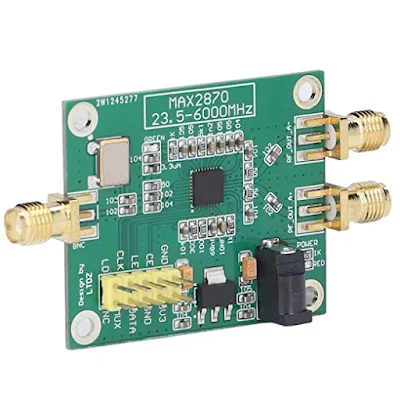Podcasting since 2005! Listen to Latest SolderSmoke
Monday, April 4, 2022
The Next Time You Hear Someone Complaining About Winding Toroids....
Sunday, April 3, 2022
Video of SolderSmoke Podcast #236
SolderSmoke Podcast #236 is available!
Podcast Posted on 1 April 2022:
http://soldersmoke.com/soldersmoke236.mp3
Winterfest! Many Boatanchors. Lots of old good analog test gear. Talk with Dean KK4DAS. Met up with Armand WA1UQO and Charles AI4OT.
Friday, April 1, 2022
SolderSmoke Podcast #236 -- Bill's 17-12 Rig, Pea Shooter, VFO Wisdom, Temp Compensation, Need Code for Max2870, Making Enclosures, MAILBAG
SolderSmoke Podcast #236 is available!
http://soldersmoke.com/soldersmoke236.mp3
Winterfest! Many Boatanchors. Lots of old good analog test gear. Talk with Dean KK4DAS. Met up with Armand WA1UQO and Charles AI4OT.
Wednesday, March 30, 2022
Mike WU2D Looks at the "Dream" SW Receivers of the 1960s and 70s (Video)
Monday, March 28, 2022
Vienna Wireless Winterfest Hamfest 2022
Saturday, March 26, 2022
Getting More Rigorous About Receiver Design (Video)
The author of the software seems very cool"
My name is Alfredo Accattatis; I love electronics and software, and I have been working for years in commercial companies as software/firmware engineer and software designer. I've been writing programs for embedded systems (with DSP and MICROCONTROLLERS), for PC, for Avionic Computers and even for Mainframes, using C, C++, Pascal, Ada, REXX and assembly. I starting write VA during my free time just for fun and using (also) my DSP experience. The program was and is completely FREE.
More info about Alfredo here:
https://www.sillanumsoft.org/about_the_author.htm
Do you folks think I need to buy the kind of True RMS Audio Voltmeter that is being used at the end of the above video?
Wednesday, March 23, 2022
First Ever Contact on 12 Meters: Homebrew, QRP, SSB, DX (Video)
There is a LOT of soul in this new rig. Here is a partial list of contributors:
-- Overall BITX design: Farhan VU2ESE
-- Termination Insensitive Amplifiers (TIA): Wes Hayward W7ZOI and Bob Kopski K3NHI.
-- TIA boards from Todd K7TFC
-- ASK-1 Mixer from Armand WA1UQO
-- VFO design parameters from Joe Carr K4IPV (SK)
-- VFO stability ideas from Frank Harris K0IYE and Mike Murphy WU2D.
-- HT-37 Tuning Capacitor bought from e-bay at suggestion of Pete Juliano N6QW.
-- Pine board base of the rig: Frank Jones (SK) W6AJF's preferred building technique.
-- DTC Band-Pass filter circuits from Han Summers G0UPL.
-- Low pass filter values from G-QRP web site.
-- Idea of using RD06HHT instead of IRF-510 in the final: Pete Juliano
-- Heat sink from Chris KD4PBJ
-- Trifilar Toroids used in many places from Farhan VU2ESE.
Thanks to all. 73 Bill








































